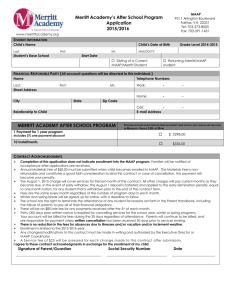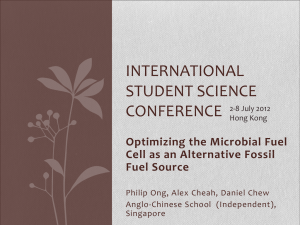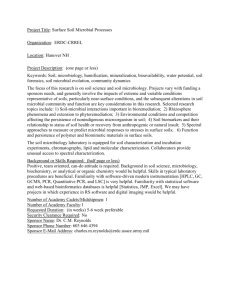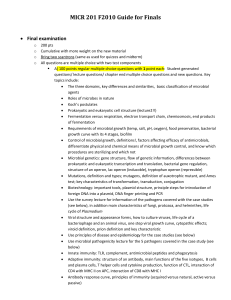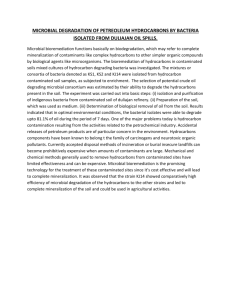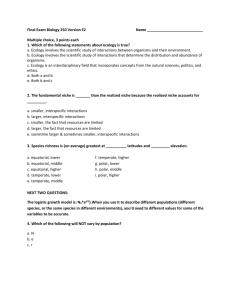ele12254-sup-0001-TableS1-FigS1-S6
advertisement
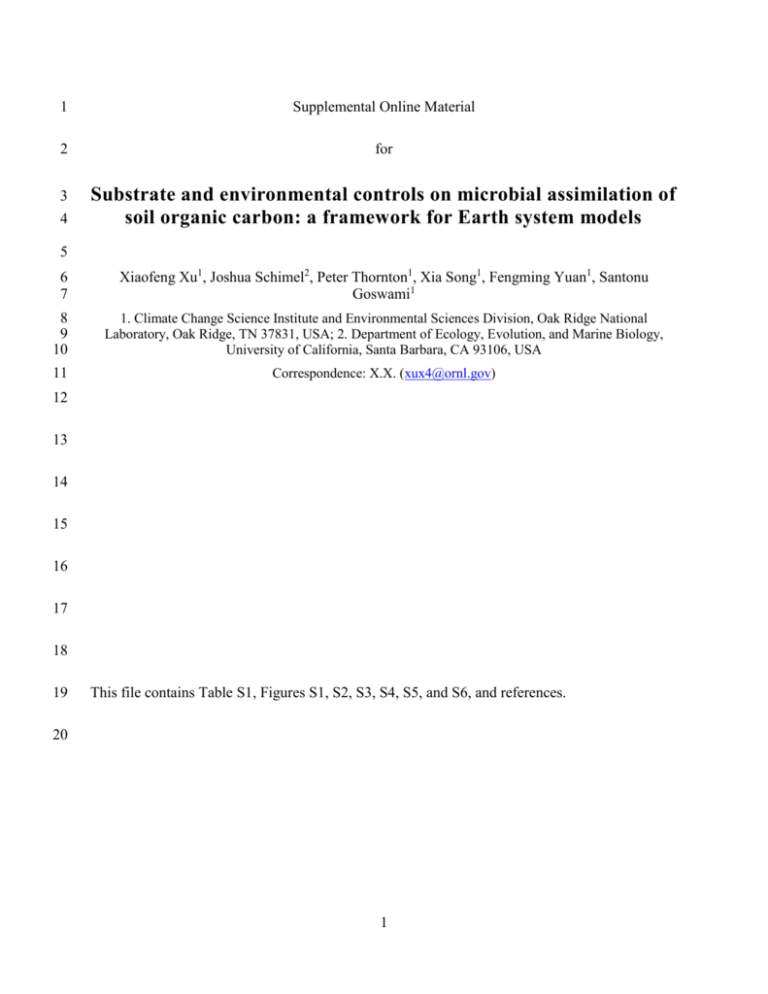
1 Supplemental Online Material 2 for 3 4 Substrate and environmental controls on microbial assimilation of soil organic carbon: a framework for Earth system models 5 6 7 Xiaofeng Xu1, Joshua Schimel2, Peter Thornton1, Xia Song1, Fengming Yuan1, Santonu Goswami1 8 9 10 1. Climate Change Science Institute and Environmental Sciences Division, Oak Ridge National Laboratory, Oak Ridge, TN 37831, USA; 2. Department of Ecology, Evolution, and Marine Biology, University of California, Santa Barbara, CA 93106, USA 11 Correspondence: X.X. (xux4@ornl.gov) 12 13 14 15 16 17 18 19 This file contains Table S1, Figures S1, S2, S3, S4, S5, and S6, and references. 20 1 21 22 23 Table S1. Biome-level parameters and initial conditions for model simulations of microbial assimilation of soil organic carbon Parameters Initial conditions Csub (mg C Kg-1 Cmic (mg C Biome CNS CNB soil) Kg-1 soil) 1e-10 Boreal forest 27 7 96734 1e-10 Temperate coniferous forest 17 5 44750 1e-10 Temperate broadleaf forest 16 7 54568 1e-10 Tropical/subtropical forest 14 8 28288 1e-10 Grassland 11 6 25000 1e-10 Shrub 17 6 47960 1e-10 Tundra 21 8 250000 Desert 9 6 2072 1e-10 Natural wetlands 16 8 275000 1e-10 Global average 16 6 50000 1e-10 Note: the C:N ratio in this table is mass based, not molecular basis reported in Xu et al. (2013) 2 24 25 26 27 Figure S1. Histogram of the MAAP for primary biomes (the values below the biome name represent average and range of the MAAP at 90% confidence level; MAAP: microbial annual active period) 28 3 29 30 31 Figure S2 Spatial distribution of MAAP as estimated based on the soil temperature and moisture simulated by Community Land Model 4.0 (MAAP: microbial annual active period) 32 4 33 34 35 Figure S3 Spatial distributions of (A) average microbial activity index and (B) cumulative microbial activity index 5 36 37 38 39 Figure S4. (A) The daily soil temperature and moisture and (B) calculated CMAX and MAAP at MAAP = 275 days and MAAP = 293 days (MAAP: Microbial Annul Active Period; CMAX: Cumulative Microbial Activity index; CMAX is the area beneath the lines in (B)) 40 6 CESM/CLM Model Daily soil temperature and moisture C:N range Adjust temperature and moisture to meet MAAP MAAP range Latin Hypercube Sampling 200 pairs of MAAP & C:N Biome-level model simulations (200 estimates each biome) 41 42 43 Biome-level microbial assimilation of soil organic carbon (Cmic/Corg) Figure S5. The flowchart showing the biome-level estimates Cmic/Corg (CESM: Community Earth System Model; CLM: Community Land Model (Thornton et al., 2009)) 44 7 45 46 47 48 Figure S6. Model simulations for soil microbial biomass C driven by the globally averaged substrate quality and daily soil temperature and soil moisture (inset shows the seasonality of microbial biomass carbon over the last year) 49 8 50 References 51 1. 52 53 54 Thornton, P.E., Doney, S.C., Lindsay, K., Moore, J.K., Mahowald, N.M., Randerson, J.T. et al. (2009). Carbon-nitrogen interactions regulate climate-carbon cycle feedbacks: results from an atmosphere-ocean general circulation model. Biogeosciences, 6, 2099-2120. 55 2. 56 57 58 Xu, X., Thornton, P.E. & Post, W.M. (2013). A global analysis of soil microbial biomass carbon, nitrogen, and phosphorus in terrestrial ecosystems. Global Ecology and Biogeography, 22, 737749. 59 9
